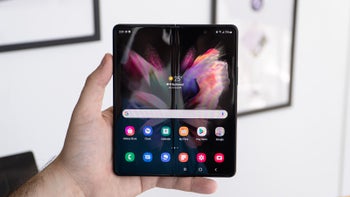Apple takes a page out of the Z Fold 3 display book to use in a foldable iPhone
We may earn a commission if you make a purchase from the links on this page.

Apple has begun the development of an OLED screen panel without a brightness-reducing and panel-thickening polarizer on top which is another sign it may be experimenting with foldable iPhone displays, reports The Elec.
Samsung researched a flexible OLED display without a polarizer layer and employed it for the first time on the main display of the Galaxy Z Fold 3, while Apple is still in a testing phase and may release its first device with a thinner OLED screen that doesn't have a polarizer in 2025, tip the industry insiders.
While polarizers direct the light dispersion and improver on viewing angles and general visibility of an OLED screen, they also decrease the light transmittance hence increase the power consumption to achieve the same level of brightness, and make the panels thicker.
"Instead of using a polarizer film, Samsung Display printed a color filter on the thin film encapsulation and added a black pixel define layer," says the report. The black layer was put in place of the photo-sensitive orange polyimide one that was packaged with the polarizer before in order to offset the color disturbance that would have resulted from using the old orange layer with the new color filter.
Removing the polarizer resulted in 25% less power consumption and 33% higher light transmittance which explains Samsung's marketing name for the technology, ECO2 (or Eco Square).
As you can see from our Galaxy Z Fold 3 display benchmarks above, there has certainly been an improvement in color accuracy and brightness levels in comparison with the polarizer-endowed Z Fold 2.
The fact that Apple is also working with Korean OLED display manufacturers on a display without a polarizer layer indicates another step towards a foldable iPhone or another foldable Apple device release at some point in the not-so-near future.

























Things that are NOT allowed: